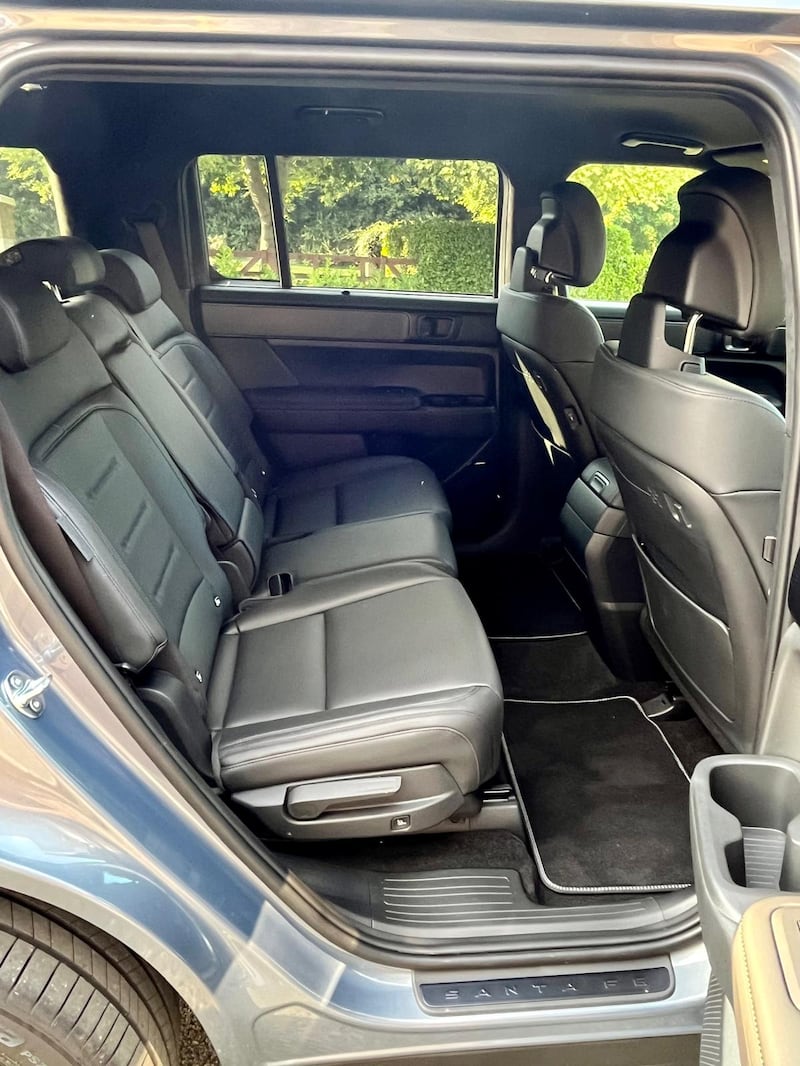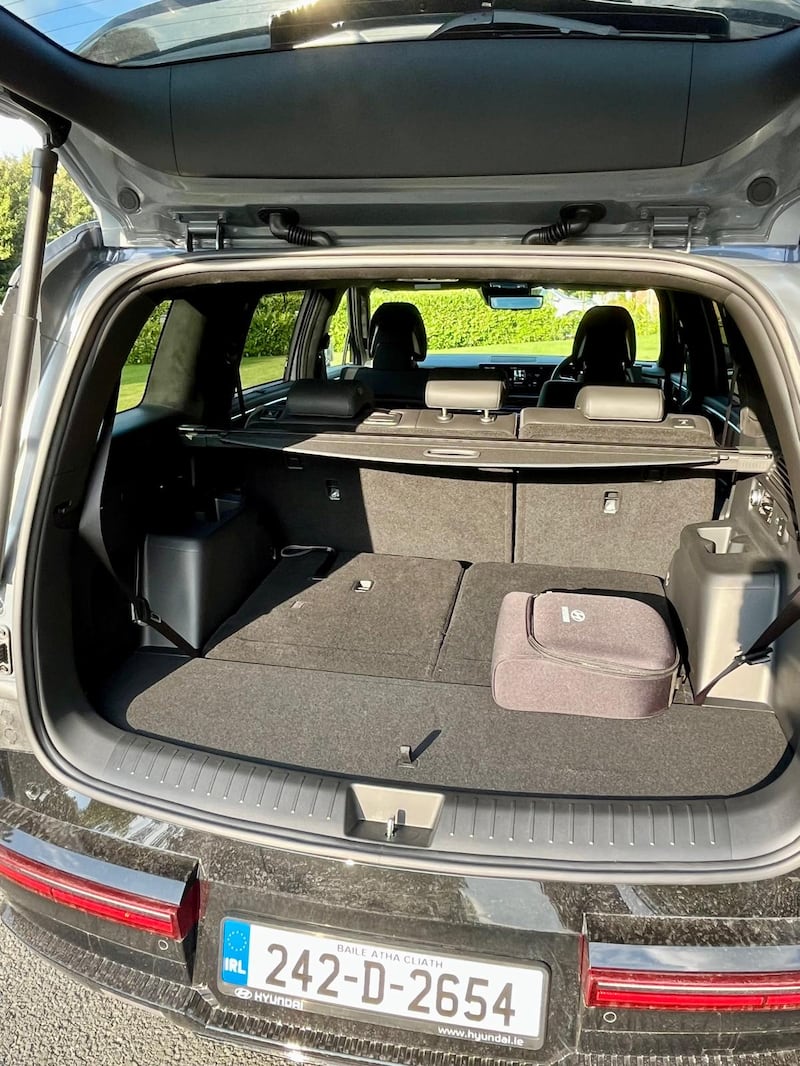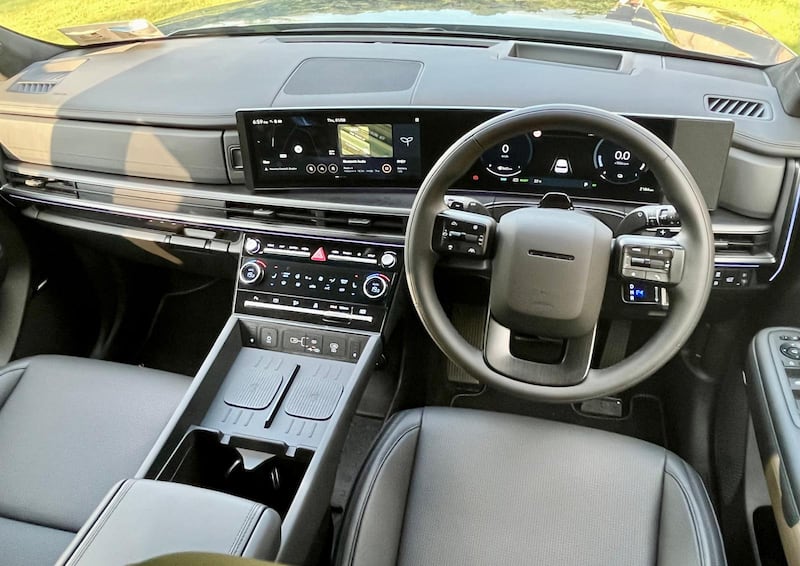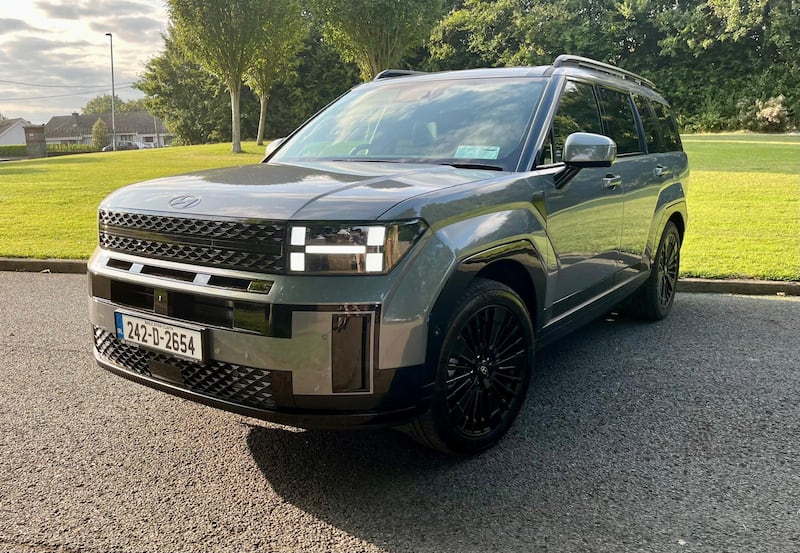Hyundai may still be contemplating the stalled rollout of its Genesis sub-brand as a new premium entrant in Ireland, but it already has a player in the mix against the Germans: its Santa Fe.
For more than two decades, this SUV has conquered the driveways of well-heeled Irish families, pushing aside established premium rivals.
It has become such a fixture of Irish suburban motoring that the model moniker is arguably a brand in itself, more Santa Fe by Hyundai than Hyundai Santa Fe.
Brand-conscious households who wouldn’t countenance having any other Hyundai parked in front of their house, were happy to be seen in a Santa Fe.
Now it has the metal to match the moniker. If these suburban SUV motorists all secretly aspired to drive Land Rovers, then the Koreans are now doing their damnedest to give them just that.

Hyundai has created something of a Land Rover homage with its new Santa Fe. The British off-road brand should be rightly chuffed, but also comforted in the fact that this is not really a challenger when it comes to rugged off-roading, nor is it actually that mammoth when you inspect it up close.
The boxy styling looks imposing from a distance, but stand behind this car and it doesn’t seem that tall at all.
On the road, the Santa Fe PHEV feels steady, if a little off the pace. Hyundai will offer the Santa Fe in all engine formats, from diesel to petrol, fully-electric to regular hybrid.
Our test car was the plug-in hybrid (PHEV) version, powered by a 1.6-litre petrol and supported by a 72kW electric motor. Hyundai claims a full-electric range of 54km, which is decent for its size but some way off the pace of some PHEVs which promise to deliver closer to 100km.
While the Santa Fe PHEV weighs in at roughly 2.2 tonnes – not extraordinarily heavy in this age of weighty EVs – it could certainly do with more grunt to shift this SUV and seven occupants.
Kick down and it feels as hefty as it looks. Of course, no one is looking to go racing around in a seven-seater SUV, but the Santa Fe feels under-engined particularly when you use up that EV-only battery range, and it is crying out for a bigger motor to haul this behemoth down the road.
The suspension set-up is clearly tuned for comfort, so the Santa Fe does tend to lean into bends. It’s not a barge by any means, but the trade-off for delivering a more supple ride for those three rows of occupants is that it’s not that sharp to drive.
The tendency towards comfort is fitting for the car when you get inside. This is a very plush people carrier, with cathedral-like interior space. No kidding; you could nearly stand up in the middle row. There is limo-class amounts of legroom in the middle row while headroom throughout is on the scale of a minibus.


And unlike many rivals, the third row isn’t steerage. Not only can you sit back there without having to rest your chin on your knees, but there are cupholders and USB points for occupants. To top it all, when the seats are in use, you still have a enough bootspace for a family shop or a few suitcases.
There are a myriad of cubbyholes and stowage options; so many that finding something “left in the car” is no mean feat. One notable feature is a smart cubbyhole that can be accessed from the front and middle-row seats, so it’s not simply reserved for the front-seat passengers.
Hyundai is also encouraging owners to consider greater use of roof storage options and has added a smart little grab handle hidden in the C-pillar that helps you get up there to load a bike or stowage box.
Overall, cabin trim is as impressive as we’ve come to expect from Hyundai since it revolutionised its model line-up starting with the Ioniq 5 EV. Smart digital screens surround the driver, and as with the Ioniq models, moving the transmission control to a steering column stalk creates extra space for dual smartphone charging in the central console.

A few words about the front seats are in order: they epitomise the character of this car: soft, spacious and well-upholstered.
A plethora of tech gadgetry comes as standard on the car, from the digital rear centre mirror – that does take a few trips to adapt to – through to the heads-up display and surround view monitors that ease parking the Santa Fe in Irish carpark spaces designed with Fiat Pandas in mind.
For the privilege of looking like a Land Rover and garnering all that extra space, you need to add €5,000 to the price of the outgoing PHEV Santa Fe. At a time when car firms are asking buyers to make price walks of upwards of €15,000, that’s not bad at all.

Starting at €66,995 for the Premium version, a further €3,000 will get you into the higher Calligraphy version.
Hyundai has its sights set on some specific rivals: namely Volvo’s outgoing XC90 and the Land Rover Discovery Sport. It claims to have a €30,000 price advantage on the Volvo and €12,000 on the Land Rover, while also boasting significantly bigger bootspace, head and legroom and equipment levels. It’s a strong pitch that’s worth consideration by anyone in this marketplace.
What it lacks in driving fun it makes up for in comfort and practicality. The steady march upmarket continues and you are left wondering if introducing Genesis is worth the bother, given the levels of quality and refinement being delivered by the supposedly mainstream brand these days.
Lowdown: Hyundai Santa Fe
Power: 1.6-litre four-cylinder petrol engine putting out 160hp (118kW) plus a 72kW electric motor supported by a 13.8kWh lithium-ion battery pack
Emissions: 38 l/100km
L/100km (WLTP): 1.7
Price: €69,995 as tested (starts at €66,995)
Verdict: The lap of luxury and well-priced, but in need of a powertrain that packs a greater punch.















